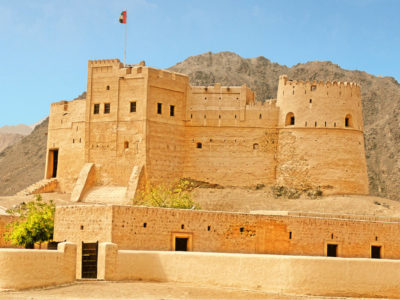Dibba
Dibba is a coastal area at the northern tip of the eastern Arabian Peninsula on the Gulf of Oman. It is politically divided into three segments:
- Dibba Al-Fujairah, ruled by the Emirate of Fujairah, UAE
- Dibba Al-Hisn, ruled by the Emirate of Sharjah, UAE
- Dibba Al-Baya, ruled by the Governorate of Musandam, Oman
Dibba Al-Fujairah is a city in the emirate of Fujairah, located in the northeast part of the United Arab Emirates. It is geographically part of the Dibba region. Dibba Al-Fujairah is considered the second-largest city in the emirate of Fujairah after Fujairah City. With an area of 68 square kilometres,[1] Dibba Al-Fujairah had an estimated population of 41,017 (estimate) in July 2019. Dibba Al-Fujairah has a number of suburbs and smaller neighbourhoods, including Akamiya, Al-Rashidiya, Wasit, Al-Ghurfah, Sumbraid, Rul Dadna, Al-'Aqqah, Suwayfah, and Sharm.
This large natural harbour on the east coast of the northern Emirates has been an important site of maritime trade and settlement since ancient times. There is some slight evidence, mainly from tombs, of settlement during the later 2nd millennium and the early first millennium BCE, contemporary with such sites as Shimal, Till Abraq and Rumeilah. There is also scattered occupation during the period of al-Dur and Mileiha but it is in the period just prior to, and after, the coming of Islam that people hear most about Dibba. Under the Sasanians, and their Omani clients, Al-Julanda, an important market existed at Dibba and that it was sometimes the capital of Oman. Otherwise, like the region of Tuwwam, it was taxed by Al-Julanda, who reported to the Persian marzban (military governor), who was based at Al-Rustaq in what is now Oman.


